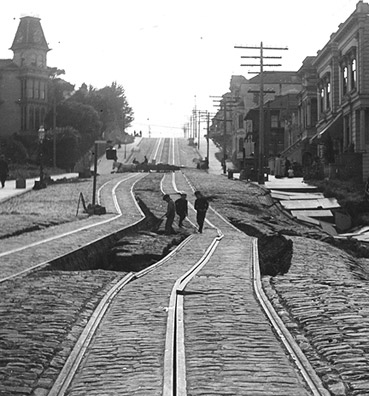At 5.13 am on 18 April 1906, San Francisco - the seventh largest city in the US - shook, crumbled and burned to the ground.
A massive earthquake, measuring 8.25 on the Richter scale, brought the city to its knees. It sparked uncontrollable fires that raged for three days, taking several thousand lives and leaving half of the population homeless.
The 1906 earthquake is important in the history of Lloyd’s because it had a profound effect on the insurance industry of today. The aftermath of the disaster laid the foundations for many of today’s modern risk modelling and building practices.
The San Francisco quake was also a key point in the life of the eminent Lloyd’s underwriter, Cuthbert Heath, whose actions during the rebuilding of the city solidified Lloyd’s position in the US market and helped pave the way for Lloyd’s as we know it today.
